Figure 1: The Blue Willow Pattern first popularized by Minton (1) in 1780, and readily available at your local Woolworths.
This research project was initiated as a response questions from Master Crispin regarding blue on white ceramics at Fields of Gold 2014. I knew the basics such as the significant influence of Chinese (Ming)ware on the European market but I didn't know if this was a stylistic influence or something else. (turns out it's practical, higher firing temperature creates stronger ceramics and cobalt is stable at these temperatures). Given that 'Blue on White' is a wide topic I started as I usually do, hitting up my favourite museum collections for some extant samples. I've stored these on pinterest, tried to assemble a small collection of representative pieces and a timeline. I've also collected quotes from various sources that relate to the pieces above them. For some reason vases seemed to be a thing and it's interesting to see the motifs and shapes changing over time and cultures. This is a HUGE topic which I only touch on but I feel this research essay is sufficient generalist background as I conduct additional research for each project as well. Where possible I've utilized primary sources (extant objects) but have referenced a number of secondary or tertiary sources as well. Additional reference material is provided at the end and I've put this one behind a cut because it's a massive post and reasonably picture heavy.
Blue-on-white images timeline
7th Century - China (Figure 2)
9th Century - Iran (Figure 3), Iraq (Figure 4)
10th Century - Iraq (Figure 5)12th Century - Iran (Figure 6), Syria (Figure 7)
13th Century - Iran (Figure 8)
14th Century - China (Figure 9 - Ming domination)
15th Century - Syria (Figure 10), Spanish (Figure 15), Iran (Figure 11)
16th Century - Florence, Italy (Figure 16), Iznik,Turkey (Figure 14), China (Figure 13)
17th Century - Iran (Figure 12), French (Figure 17 & 18), Dutch (Figure 19 & 22), English (Figure 20 & 21),
20th Century - Australia (Figure 1)
Like many people, I'm quite taken by the pleasing visual combination of blue and white. I was brought up eating on the ubiquitous Blue Willow pattern (Figure 1) and like many Westerners I associate blue and white ceramics with Ming ware. The use of blue on white predate the accepted dates of Mingware (15th century) in many countries including China (Figure 2). This research examines examples of blue and white ceramics across Europe and the influence of Mingware on ceramic workshops across Europe and the Middle East.

Figure 2: Bowl with Five Petaled Flower, Tang Dynasty, China (~7th Century), Earthenware with painted decorations on slip and clear glaze. Met Museum Accession number 2006.431
Cobalt Glaze
The strong blue in the glaze is derived from cobalt of which there are multiple sources in Asia and Europe. The impurities present in the cobalt helps researchers define the source of the ore and make assumptions about trade routes and commodity scarcely. Cobalt doesn't form as a pure mineral and must be refined before use adding an additional challenge to this task."Cobalt used in Abbasid glazes are characterized by zinc and iron, the chronologically earliest specimen found is glass from ninth-century Samarra (Iraq). The scratch decorated vases... from the Serce Limani shipwreck (1025 - Turkey(2)) are also characterised by zinc suggesting the same or a very similar geological source of colbalt was used to colour both medieval Islamic glass and medieval western glass. At Akda'Madeni in Turkey, there is a cobalt-rich mineralisation that is associated with galena which suggests this is the source for cobalt associated with lead and zinc impurities. In 1168 sources at the Erzgebirge district near Freiburg (Germany) started to be exported and were associated with a zinc and galena blend and could be an alternative for the Turkish source though lead isotope testing indicates the Turkish deposit was the most likely source (3) "

Pre-Ming Blue on White ceramics
"In China, blue first appeared as an accent color in splash-glazed wares
of the Tang dynasty (618–907), (4)". The bowl in Figure 2 is a good example of Tangware."The composition of pre-15th century (Yuan dynasty) pigment is
comparable with materials used in the Middle East as opposed to the
evaporite sources from Egypt (5)". This suggests a majority of the worlds cobalt at this time was derived from Iranian (Kashan) sources. This made the ore expensive and was used sparingly away from the source. Cobalt blue was quite popular in certain types of ninth century Iraqi pottery. The bowl in Figure 3 was found in Nishpur, Iran however this style isn't associate with Nishapur pottery so the bowl has been attributed to Iraq or western Iran (6). Figure 4 displays a bowl from Iran from the same time period which exemplifies the quality of the blue on white ceramics of the time.This bowl is also among the first examples to incorporate calligraphy as a decorative element in what becomes a pervasive feature of ceramics from this region. The white background of this bowl was created through the of an opaque white tin glaze under the cobalt. (7) This method of underglaze is beautiful and continued well into the 13th century (Figures 5 & 6). Cobalt was not used in isolation and polychrome items were also being produced at this time in Syria and Iran (Figures 7 & 8 respectively).
Figure 4: "Bowl Emulating Chinese Stoneware, 9th Century, Basra Iraq. Earthenware painted in blue on opaque white glaze. Met Museum Accession Number 63.159.4
Figure 5: Bowl sherd, ceramic, Iraq. Opaque white glaze painted with cobalt blue decoration. Mid 9th-10th Century. British Museum item number 2007.6001.1624
Figure 6: Vase, 12-13th Century. Stone-paste painted underglaze. Kashan, Iran. Freer-Slacker, Smithsonian Museum for Asian Art item S1997.116
Figure 7: Bottle, glazed. 12th-14th Century. Syria. Freer-Slacker, Smithsonian Museum of Asian Art item number F1905.285
Figure 8: Jug. Fritware with blue and black glaze on opaque white background. Persian. 1201-1225. British Museum item number 1925.1130.1.
Mingware
The history of blue and white ceramics is a classical example of
cultural exchange. The Chinese were the first to develop a white ceramic
material. Iraqi potters copied it using white tin glazes, which were
often decorated in cobalt blue. The Persians were the first to decorate
white fritware in blue under the glaze. The Chinese then copied it on
porcelain, and from the 14th century, Chinese blue and white export
porcelain provided the model in the Middle East and Europe. (8)"
"The high kaolin content of the porcelain enabled it to be fired at 1350o
C to obtain an incredibly hard ceramic body of a pure white. Along with
copper red and iron, cobalt is one of the only pigments that can
withstand such high temperatures and it thus became established as the
colour par excellence for this type of ware. The exceptional resources of
Jingdezhen, which was both rich in kaolin and close to southern ports,
were to be decisive factors in its future expansion." (9). Porcelain first appeared in China in the second quarter of the 14th century (Figure 9) "While the
vast majority of early blue-and-white porcelains were exported,
particularly to the Islamic countries of Turkey, Timurid Persia
(present-day Iran) and Syria, excavations at Jingdezhen have shown
that there was some demand in China
itself." (10)
The secret of porcelain was a tightly controlled. This increased the
value of the strong Chinese ceramic exports to the Ottomans and other
nations exposed to trade along the silk road. As a result blue on white
became a symbol of value which was adopted by many potters even before
they produced porcelain themselves. The Middle Eastern blue and white pottery motifs were strongly influenced by the Chinese export porcelain. Often the artists would transfer Chinese decorations to local forms (Figure 10). Bottles of this yuhuchun type are found on Timurid
miniatures from the 15th century, but it was probably the coveted
Chinese originals that were depicted." (11). Some pieces were blatanet copies of Chinese porcelain such as the Persian dish in Figure 11. "The decoration on this Persian dish copies a contemporary Chinese
pattern. The largest flowers look like peonies when seen from above, but
the smaller ones resemble lotuses when seen from the side. It can,
however, be difficult to tell these flowers apart, even on their Chinese
models. (8)" Other artists adapted the Chinese motifs and integrated them into local styles, Figure 12. Interestingly, the fish dish in Figure 9 from the Jiangxi province in Southern China shows a floral scroll motif and fish among waterweeds which is Chinese in character but shape of the dish is reminiscent of Islamic metalwork (10) indicating a reciprocal relationship.
Not only were decorative motifs exchanged along the silk
road, so were the shapes of the ceramics. Figure 12 and 13 show vases
produced in the late 16th and early 17th centuries. Though produced in
China and Turkey respectively, they have very similar onion shapes. Each
bottle also integrates both Middle Eastern and Chinese design elements.
Figure 9: Blue and white porcelian fish dish. Yuan dynasty, 14th Century, Jiangxi province, southern China. British Museum, Asia OA 1968.4-22.26
Something very similar also exists in the Met Museum, accession no 1987.10.
Figure 10: Fritware bottle, Painted in blue under a transparent glaze. Syria, beginning of the 15th century. The David Collection, Kopenhagen. Inv. no. 29/1988
Figure 11: Ceramic dish with blue underglaze decoration. Iran, 2nd half of 15th century. The David Collection, inventory number 73-1998.
Figure 12: A Safavid Blue and White Vase, Iran, 17th Century. Sold by Chriesties on 10/10/2014, Sale 5526, Lot 175
Figure 13: Blue and White Porcelian Bottle Vase, China, Kangzi Period 1662-1722. Sold by Christies on 2/10/2012.
Figure 14: Iznik Pottery Bottle, Provincial Ottoman, Late 16th Century or Early 17th.. Sold by Christies on 25/4/2013.
European Porcelain
Chinese porcelain would travel along the silk road to the Middle East and then find it's way through various routes to Europe. The Chinese items would accompany work created in the Middle East so European potters not only were influence by the superior porcelain material, but the design elements of both China and the Middle East. The Islamic influence can been seen in Figure 15, a Spanish dish. Though this item is not truly blue on white, it utilises cobalt pigment. The style was produced between 1450-1570 and is called Purple and Blue (by the UK), Isabela Polychrome (US0 or Azul U Morada by the Spanish (12).
"Medici" porcelain is the first
porcelain known to have been made in Europe. It was produced under the
patronage of Grand Duke Francesco de'Medici (1541–1587), who was
probably inspired by the large collection of Chinese porcelain and Iznik
pottery amassed by his father, Cosimo I. A striking feature of the
production is the intermingling of oriental, Islamic, and Renaissance
stylistic elements. (13). Figure 16 shows one of 64 known examples (14) of Medici porcelain and displays strong maiolica design elements. Due to the high cost of the high-firing method, this was a short lived production.
Though out of the SCA period, it is important to note that were were some late 17th century commercial producers of porcelian. The Rouen manufactory (Figure 17) is of note because they used 'soft paste porcelain' which fires 200 degrees cooler than the Chinese 'hard paste'. This difference in temperature makes production significantly cheaper to produce. This soft paste porcelain as soon produced in many factories. Figure 18, a vase from the Saint-Cloud Factory in France, shows Chinese influence in both it's design elements and the ribs molded around the body of the vase.
Figure 15: Dish, Seville, Spain. 1470-1500. Tin Glazed Earthenware, V&A Museum (right) item 36-1907
Figure 17: Potpourri jar, Rouen, France. 1695. Met Museum, Accession number 50.211.186
Figure 18: Vase from Saint-Cloud Factory, France. 1700-1710. British Museum Accession AF.3193
Delftware
Delftware is the other well known form of blue on white ceramic. Named for the fine examples that came out of Delft, Netherlands, the blue on white tin-glazed pottery was actually produced across the Netherlands. In the 16th century, the blue on white trade from China had dropped but the demand was still high. In the Netherlands, this market was met by many potteries in Delft and other regions opening in a brief timeline. Figure 19 is a lovely vase from Delft producer in the late 17th century with striking Chinese design elements. There was also a strong English delft movement. Figure 20 shows an English delft vase which displays a Chinese design element whereas Figure 21 is a plate with a style I find reminiscent of early Mailoica. Like the Middle Eastern potters, the producers of delft used an opaque tin glaze to produce the white background which they then decorated with a cobalt glaze before adding a clear overglaze to replicate the sheen of the porcelain. Like all tin-glazed earthenware centres (Italy, Spain, Iran, Turkey and Iraq), Delft manufactories also utilised the additional colours available in the lower firing range. Each of these locations produced earthenware in a range of colours however delft became synonymous with blue on white ceramics. This may have been due to their prolific production of blue on white tiles such as that shown in Figure 22.
Figure 19: Vase with a cover. Tin-glazed earthenware. Delft, Dutch 1690. The Met Museum, accession number 2006.309.1a,b
Figure 20: An important early English delft bottle vase, C 1650-1670. Sold by Bonhams on 8/6/2005, Lot 22
Figure 21: English Delft Blue and White, 1680, London or Brislington. Sold by Christies on 23/1/2009, Sale 2133, Lot 147.
Figure 22: Tile designed by Daniel Marot the Elder. 1694, Dutch, Delft. tin-enameled earthenware. Met Museum Accession number 64.101.389
Summary:
Though blue on white (slip or tin-glaze) earthenware can be found across Europe and the Middle East, the discovery of high firing porcelain and cobalt underglaze in the 14th century in China had a great impact on the European ceramic market. From the 14th century through to the 17th there were distinct pottery cultures in Spain, Italy, the Netherlands, Turkey, Syria, Iran, Iraq and even England. As China started exporting the stronger, white porcelain, it became a prized item. As these pieces worked their way west, the local pottery centers adopted the decorative motifs, the shapes and, eventually, the technology. Initially traded along the silk road, the Middle East (Iran, Syria and Iraq) first started adding their own touches to the style. These were then passed onto Spain and Italy creating a third design element. Moving out of the SCA 'period' (post 1660) the powerhouses of The Netherlands and England refined their styles and produced beautiful Delftware with (in my opinion) artistic peaks in the 18th and 19th centuries
References
1) The History of China's Willow Pattern, Collin Bisset, ABC Australia. http://www.abc.net.au/radionational/programs/bydesign/the-history-of-chinas-willow-pattern/5124908, accessed 30/12/2014
2) Excavation of a Byzantine Shipwreck, SIMERG, http://simerg.com/literary-readings/excavation-of-a-byzantine-shipwreck-and-the-discovery-of-fatimid-artefacts/, accessed 30/12/2014
3) Julian Henderson, 2013. Ancient Glass: An Interdisciplinary Exploration. Cambridge University Press, Page 75 of 450.
4) A brief blurb about cobalt blues in Chinese Ceramics. Portland Art Museum http://portlandartmuseum.org/exhibitions/cobalt-blues/, accessed 19/12/2014
5) Adam T Kessler, 2012. Song Blue and White Porcelain on the Silk Road, BRILL, page 511 of 680
6) A brief blurb on the imported bowl, item 39.40.6. Met Museum. http://www.metmuseum.org/collection/the-collection-online/search/449543 , accessed 19/12/2014
7) A brief blurb on the bowl emulating Chinese Stoneware, item 63.159.4. Met Museum. http://www.metmuseum.org/collection/the-collection-online/search/451715, accessed 19/12/2014
8) Blurb on Ceramic Dish with Blue Underglaze, The David Collection. http://www.davidmus.dk/en/presse/billeder/flora_islamica/731998, accessed 24/12/2014
9) Blurb on Meiping Vase. item G2211 . Musee Guimet. http://www.guimet.fr/en/home/92-anglais/collections/china/386-meiping-vase, accessed 24/12/2014
10) S.J. Vainker, 2011. Chinese pottery and porcelain. The British Museum Press in Blurb on the Plate with Carp, item 1968.4-22.26. British Museum. http://www.britishmuseum.org/explore/highlights/highlight_objects/asia/b/blue-and-white_porcelain_fish.aspx, accessed 19/12/2014
11) A Brief Blurb on a Fritware Bottle, item 29-1988. The David Collection. http://www.davidmus.dk/en/collections/islamic/materials/ceramics/art/29-1988, accessed 20/12/2014
12) Seville Moresco Ware, Blue and Purple. A Guide to the Identification of Spanish Medieval and Later Ceramics, Durham University. http://community.dur.ac.uk/spanish.pottery/index_files/Page2113.htm, accessed 24/12/2014
13) A Brief Blurb on A Medici Dish, item 41.49.6. Met Museum. http://www.metmuseum.org/collection/the-collection-online/search/198704, accessed 20/12/2014
14) Medici Porcelain Manufacture. The Paul J Getty Museum. http://www.getty.edu/art/gettyguide/artMakerDetails?maker=1218, accessed 31/12/2014
Additional Links:
A Guide to the Identification of Spanish Medieval and Later Ceramics (13th to 17th Centuries) by Alejandra Gutierrez, Department of Archaeology, Durham University
community.dur.ac.uk/spanish.pottery/index.htm
An important large blue and white globular jar, Yuan Dynasty. by Rose Kerr, Former Keeper, Asian Department, V&A Museum, via Bonhams Auctions.
http://www.bonhams.com/auctions/20024/lot/66/,
A really interesting article on 'A Syrian Apothecary Jar in The Three Mary's at the Tomb by Jan van Eyck"
http://alma.boijmans.nl/en/showcase/syrian-apothecary-jar-jan-van-eyck/
Evolution of Chinese Ceramics
http://www.metmuseum.org/about-the-museum/press-room/exhibitions/2012/chinese-ceramics-on-great-hall-balcony
The last of the 32+ factories established in Delft in the 17th century.
http://www.royaldelft.com with history and a timeline
My Pinterest collection of 600+ images of blue and white ceramics (and a location map to help sort them out)
http://www.pinterest.com/AntStrike/blue-and-white-ceramics/

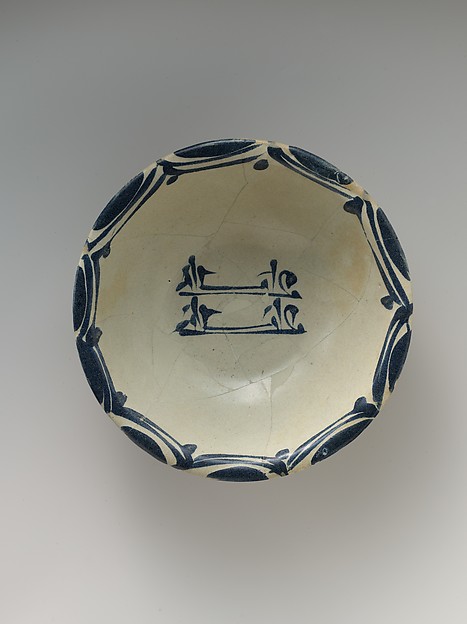






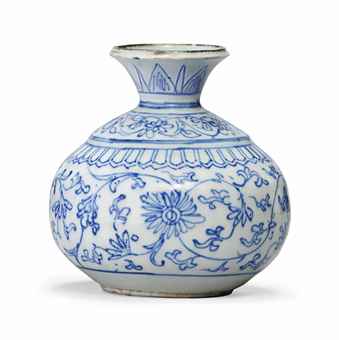
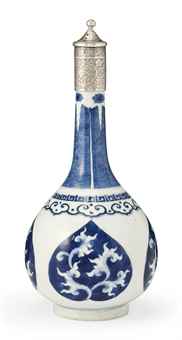
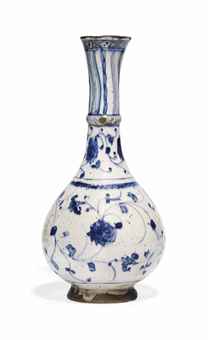
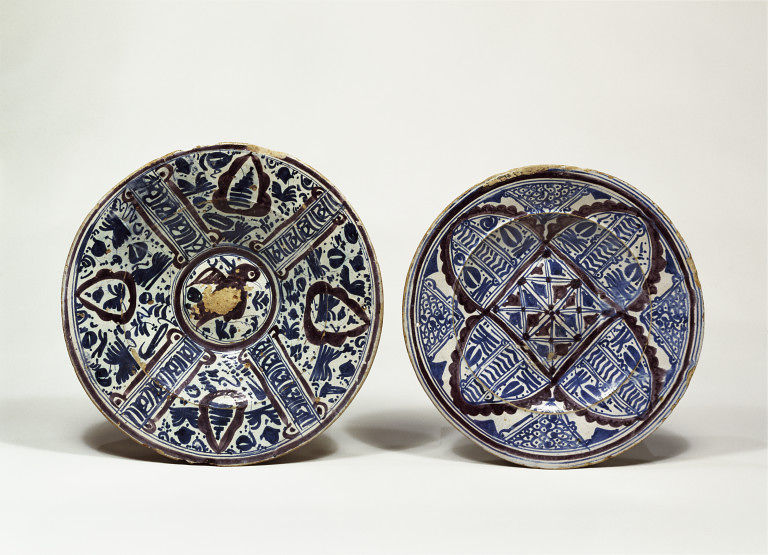

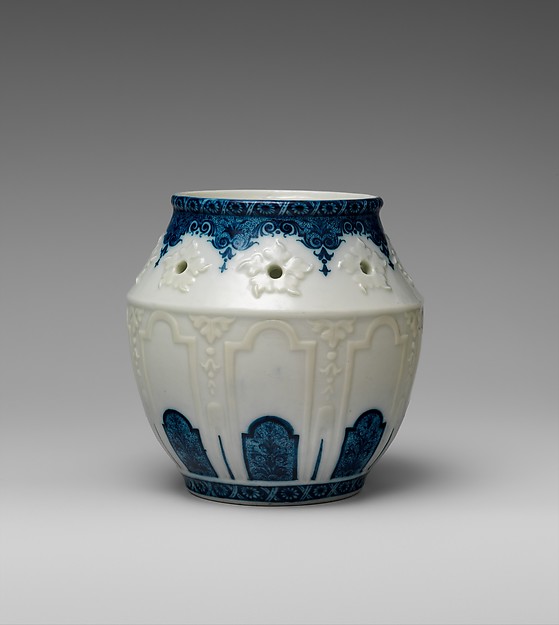

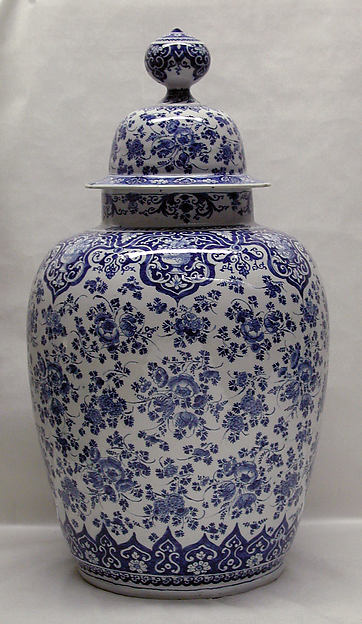

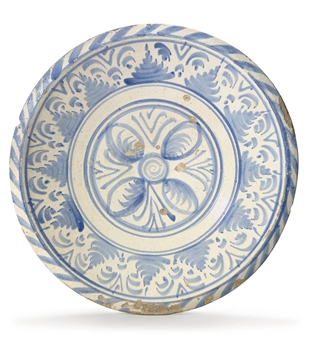

No comments:
Post a Comment